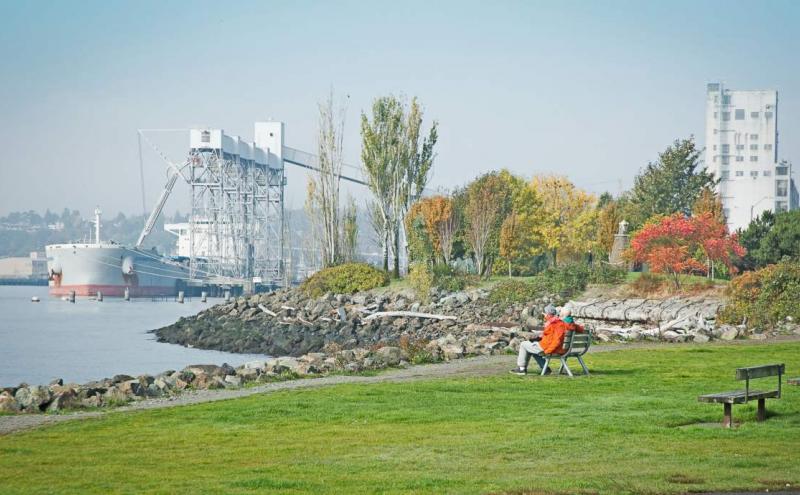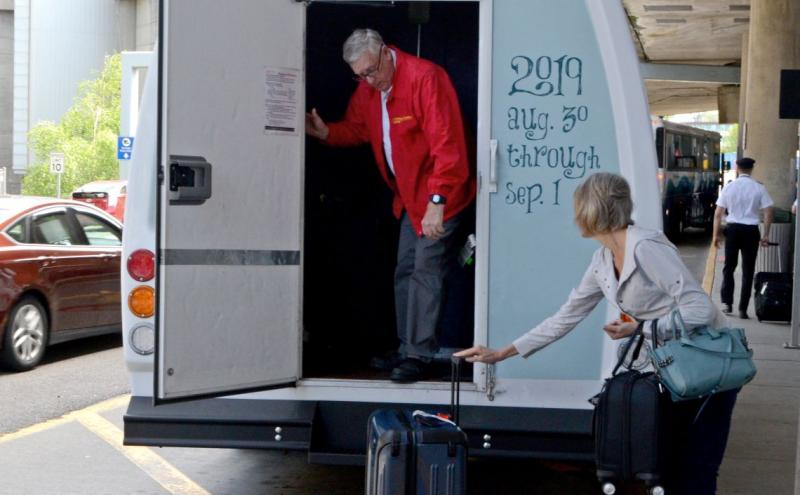
This month, the United Nations Climate Action Summit on September 23 will focus on global commitments to implement the Paris Agreement on Climate Change.
The Port of Seattle supports the Paris Agreement. In 2017 the Port joined the coalition “We Are Still In” the alliance of governments, colleges, and businesses committed to meeting the greenhouse gas (GHG) reduction goals of the Paris Agreement to combat climate change.

The Port of Seattle has a goal to be the greenest, most energy efficient Port in North America. And we’re committed to taking action to reduce our carbon footprint and air emissions, enhance sustainability, and assess new opportunities for sourcing renewable energy. To do this, we are investing in environmental programs that help protect our air and water and rely on clean energy. With more to come in the future — the Century Agenda goal is to meet all increased energy needs through conservation and renewable sources.
As agents of environmental change, we measure all new projects against a rigorous sustainability framework, furthering our commitment to regional, national, and global environmental leadership. We strive to balance economic growth, environmental stewardship and social equity, and quality of life.
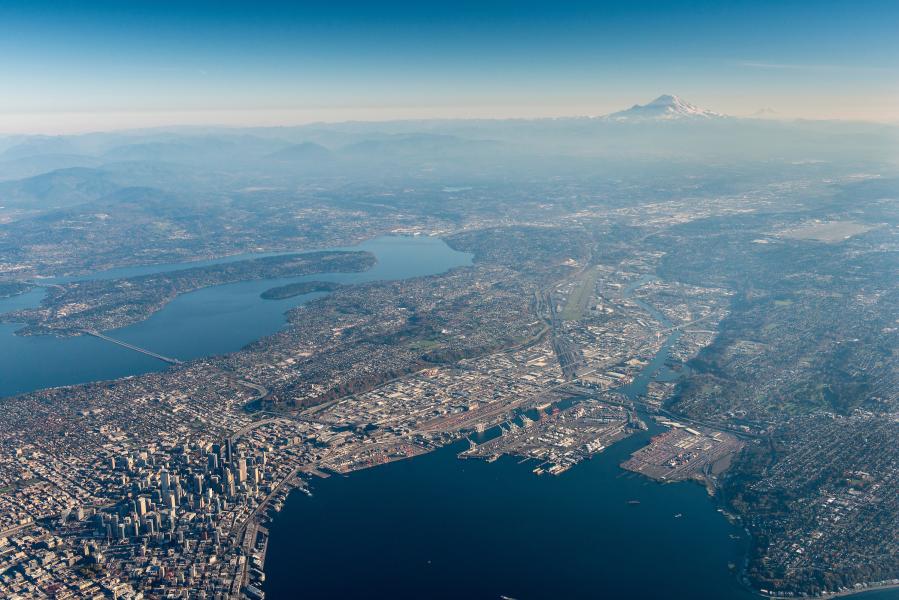
Driving green
One high priority is helping our region transition to cleaner transportation. The electric vehicle charging stations at the Seattle-Tacoma International Airport (SEA) Parking Garage, North Employee Parking Lot, and Fishermen’s Terminal West Wall Building provide travelers, customers, tenants, and employees the opportunity to charge their electric vehicle while traveling, working, and dining.
Taxis and rideshare vehicles serving the airport must meet carbon reduction requirements. We also support commute reduction efforts such as carpooling, biking, and light rail.
Plugging into shore power
We were the first home port in North America to offer shore power at two Seattle cruise berths and we haven’t stopped there. The Port is working on a plan that will bring shore power to major facilities on the working waterfront. This includes using an underwater cable to eventually connect all shore power-capable cruise ships at two cruise vessel berths in Seattle.
Every time an average cruise ship plugs into shore power at Terminal 91 it saves the greenhouse gas equivalent of a typical car driving 30 road trips from Seattle to New York.
Protecting our waters
In 2004 the Port of Seattle partnered with the Washington State Department of Ecology and the cruise industry to sign the Memorandum of Understanding for Cruise Operations in Washington State, ensuring cruise ships exceed industry, state, and federal environmental performance standards. In continued support of the protection of Puget Sound, all cruise ships visiting the Port of Seattle have elected not to discharge at all in Washington waters.
Collaborating for cleaner air
The Port works with the Ports of Tacoma and Vancouver, B.C., on the Northwest Ports Clean Air Strategy, to reduce diesel and greenhouse gas emissions. Since 2005, the Port of Seattle’s maritime emissions of diesel particulates decreased 82 percent while greenhouse gases emissions decreased 20 percent. Future goals include addressing climate change to incorporate equity, social justices, and community engagement, and set longer-range goals for joint action.
Planning for waterfront clean energy
We’re starting a 30-year planning effort, in partnership with Seattle waterfront stakeholders — utilities, governments, industry, and community — to replace fossil fuels with low or zero-carbon fuel sources. By 2050, the harbor electricity grid will be modernized to provide clean energy to Seattle’s working waterfront to increase regional competitiveness, create jobs, improve community health, and confront climate change.
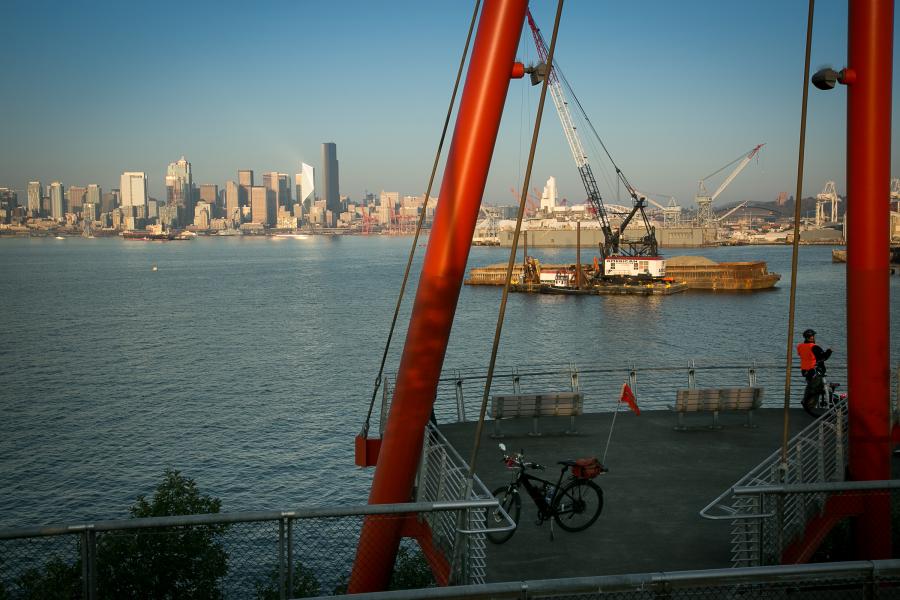
Putting sea life to work
We’re working with marine scientists on a Blue Carbon project at Smith Cove to test, restore, and improve critical aquatic habitat in urban bays. Strategically placed native oysters and aquatic plants mature and multiply, combining to produce about 23 acres of blue carbon infrastructure. Blue Carbon works to trap carbon in the environment, reduce ocean acidification, and improve water quality by enhancing natural processes.
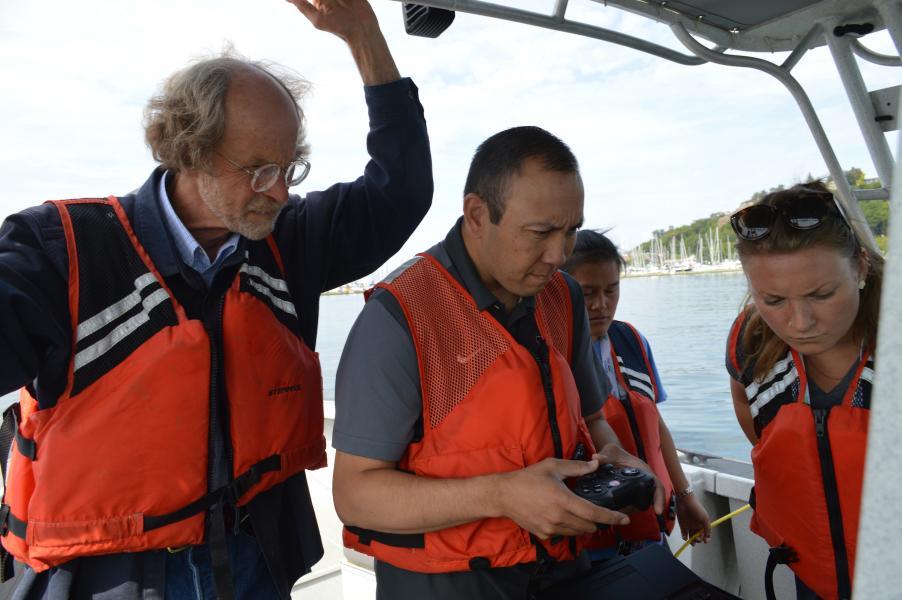
Executing solar power
We’ve completed the installation of two solar arrays on Port properties — a pilot project on a net shed at Fishermen’s Terminal — and most recently the rooftop of Pier 69, the Port headquarters. As a result, we’re reducing our air emissions footprint and decreasing operational costs.
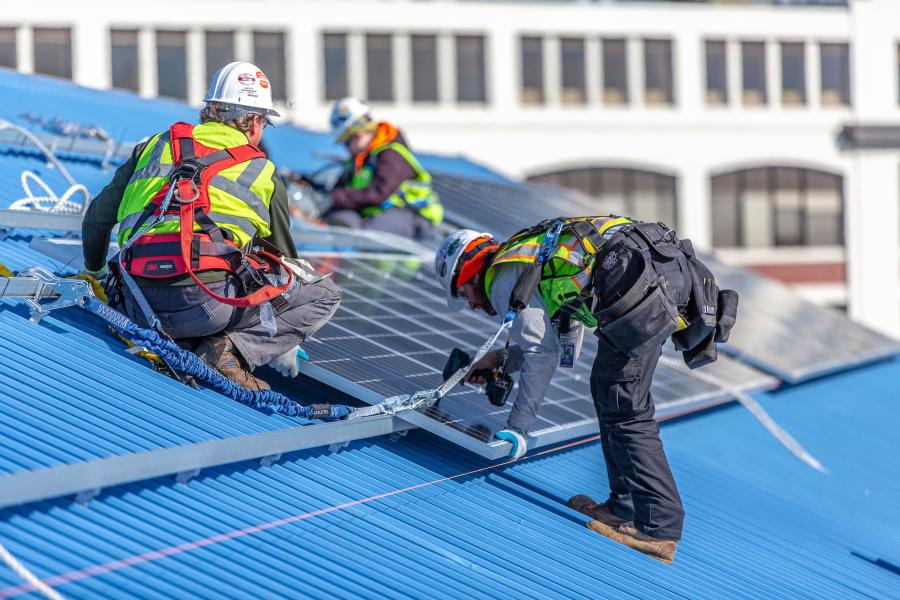
Exceeding performance standards
We voluntarily participate in the Green Marine program, a marine industry initiative with the goal to exceed regulatory requirements for environmental performance in air emissions, greenhouse gases, cargo waste management, community impacts, water and land pollution prevention, and environmental leadership. The Port has been certified as Green Marine by a third party organization for another year.
Improving the airport environment
Recognizing that residents near the airport experience more impacts from operations, the Airport Community Ecology Fund provides grants to improve livability in those communities. Since 2017, 28 grants and $239,000 have been awarded to near-airport organizations.
We also celebrate the dedication of local partners to engage in healthier communities for cleaner air and cleaner water and to invest in enhanced energy efficiency with the Environmental Excellence Awards.
Through the Green City Partnership program, the Port provided $450,000 to non-profit Forterra to improve urban forests, parks, and open spaces in SeaTac, Burien, and Des Moines. The program has developed Urban Forest Enhancement Plans, kicked off community events to remove invasive species, and trained volunteers to serve as stewards.
Developing sustainably
Seattle-Tacoma International Airport (SEA) is the eighth busiest airport in the country and as we grow, we’re incorporating sustainability programs and infrastructure that protects the environment.
The Sustainable Airport Master Plan (SAMP) is the blueprint and long term vision for responding to the area’s economic and population growth while protecting the region’s environment.
Moving to sustainable aviation fuels
The Port of Seattle has set a goal to power every flight fueled at Seattle-Tacoma International Airport with at least a 10 percent blend of sustainable aviation fuel (SAF) by 2028. At the first-ever Washington SAF Summit organized by the Port and its partners in March 2019, government and industry leaders gathered to focus on opportunities to develop a Washington-based supply chain of clean and sustainable aviation fuels.
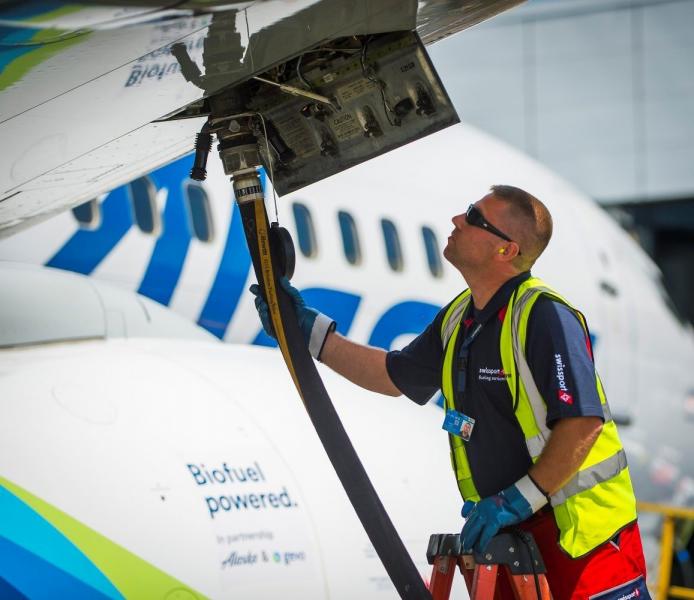
Promoting electric vehicles on the airfield
We’ve installed over 300 charging stations on the airfield to encourage airlines and baggage companies to convert their ground service equipment (baggage tugs, ramps, and pushback vehicles) from fossil fuel to electric. This currently saves over 5,000 tons of greenhouse gas emissions a year and is projected to save 10,000 tons when implemented airport-wide.
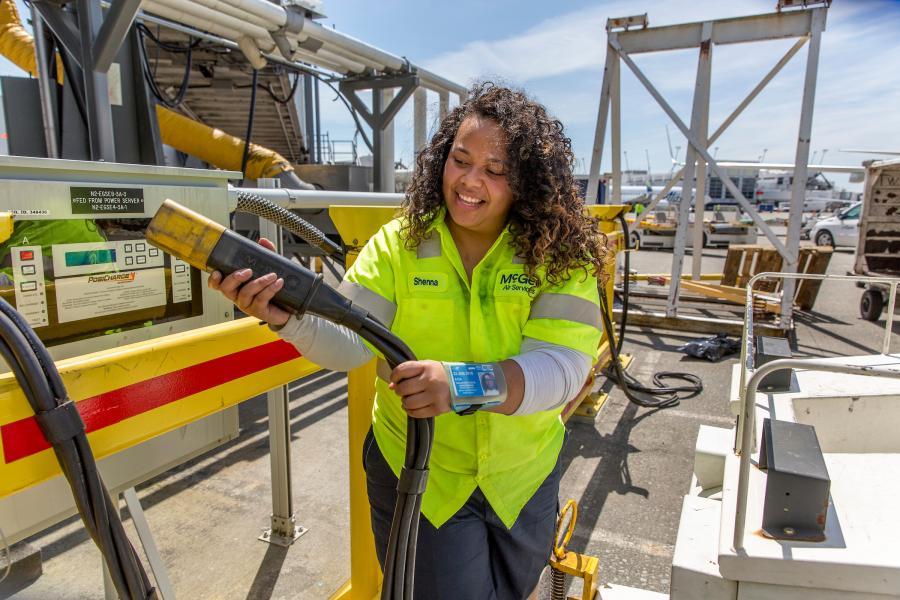
That’s just a few of many examples of how the Port is working to help protect the climate.

